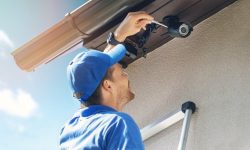Placing Emphasis on Device Placement
The need for quality, code-compliant fire alarms has never been greater. The proper operation of these systems depends largely on device placement and environmental considerations. Unless the manufacturer’s installation instructions as well as code are carefully followed, false alarms or no alarms can result.
Some new data reminds us all of the importance of our diligent work. Nearly $15 billion in property damage resulted because of fires in 2007. According to the National Fire Protection Association (NFPA), almost $11 billion occurred in structural fires, of which $7.5 billion took place in the residential sector. This represents an increase of 29.5 percent.
Most fire alarm technicians who work in the field everyday already know how to place the basic devices that go into a system. But what about new technicians who enter the market each week, or security veterans who only dabble in fire detection or seek to expand in this area? That is why SSI works so hard to provide direction in this area. Let’s dive in.
Confirmation From the Field
Probably the most fundamental device used for fire protection in the home is the automatic smoke detector. Although NFPA 72, National Fire Alarm Code (NFAC), 2007 Edition, requires the use of automatic  smoke alarms in new residential structures, from time to time security dealers are asked to install automatic smoke detectors along side of them.
smoke alarms in new residential structures, from time to time security dealers are asked to install automatic smoke detectors along side of them.
In retrofit applications where there are only battery-operated smoke alarms, security companies often install automatic smoke detectors as an adjunct to their burglar alarm systems. This is acceptable, providing they observe the manufacturer’s instructions and code requirements for proper placement.
However, as Bob Miller, a life-safety specialist and emergency preparedness liaison officer in Hamburg, Pa., points out, that is not always the case. “I found a very bad installation near Philly the other day. The installing company basically threw the smokes wherever they wanted, completely disregarding the manufacturer’s recommended spacing and/or NFPA’s spacing requirements,” he says.
Most manufacturers require 30-foot spacing between smoke detectors to assure proper coverage. Code, however, goes one step further, requiring the reduction of listed space between smoke detectors in certain situations, such as room corners and sidewalls.
According to the NFAC, “One of the following requirements shall apply:
(1) The distance between detectors shall not exceed their listed spacing, and there shall be detectors within a distance of one-half the listed spacing, measured at right angles from all walls or partitions extending upward to within the top 15 percent of the ceiling height.
(2) All points on the ceiling shall have a detector within a distance equal to 0.7 times the listed spacing” (Section 5.6.5.1.1).
Device Placement Is Problematic
Another mistake security dealers make is installing heat and smoke detectors too close to objects that might cause false alarms, or even prevent the activation of an alarm when needed. 
“The most common installation error I find, other than spacing in general, is the three-foot spacing requirement from an HVAC supply or return diffuser, exhaust fans, ceiling fans, etc.,” says Miller. “Some of the smokes were 12 feet apart, others were 50! Strobes were very close together and not synchronized. Audibles were located very close together and they were very loud. They also used nonrated cable to service other buildings.” Unfortunately, errors such as these are all too common, according to many authorities having jurisdiction (AHJs).
Another problem security dealers commonly experience is placement of smoke detectors with regard to possible points of interference. This can pertain to proper smoke detection or operation with regard to another fire protection device. A good example of this can be seen in commercial buildings with the placement of a smoke detector near an existing sprinkler head.
“As a rule of thumb, I stay back 12 inches from heads to allow the pattern the head puts off to fully disperse,” says Nick Markowitz, owner of Markowitz Electric Protection of Verona, Pa. “My 12-inch rule is good to follow because placing a smoke up close to a smoke detector would be like mounting a sprinkler head up against a wall.”
Doug Sanders, training captain for the Regina Fire Department of Saskatchewan, Canada, adds, “Depending on the type of system, the type of head and other criteria, a small obstruction could have a devastating effect on the discharge pattern and/or obstruct water from reaching a fire. A smoke alarm within 12 inches of a sprinkler head will obstruct a discharge pattern that must cover 71/2 feet — meaning a fairly substantial area is not getting any water.”
The other area where security dealers often find themselves in trouble involves the close proximity of smoke detectors to heating ducts and other potential false alarm sources.
Assuring Proper 3rd-Party Listings
Knowing what to use and where to use it is integral to the fire protection/detection mission. Without a firm understanding of fire code, especially the various requirements for equipment listings, a job can go wrong in short order. 
“I recently had to change out a whole install in an apartment building when a [security] dealer thought he could use a residential burg panel for the smoke detectors in the hallways,” says Markowitz. “He got a real eye-opener when the AHJ came on the job and started asking where the permits were, etc. Needless to say, they lost their tail on that job.”
The alarm dealer in this case lost money simply because he failed to use properly listed equipment. The listing issue is especially important where it comes to the type of fire alarm panel used in a specific application. Commercial facilities require the use of a commercial listing by a third-party testing and listing facility, such as Underwriters Laboratories (UL) of Northbrook, Ill.
Listing is also important where it comes to devices, such as two-wire smoke detectors. This is because two-wire smokes typically draw a given amount of current, thus setting off the alarm when detection occurs. The third-party laboratory involved must test the smoke detector(s) in question with the listed panel in order to assure the alarm, indeed, takes place.
There are certain types of devices where a third-party listing is not required. This includes four-wire smoke detectors and horn/strobe NAC appliances. Most modern fire alarm panel manufacturers publish a complete list in their instruction booklets.
If you enjoyed this article and want to receive more valuable industry content like this, click here to sign up for our FREE digital newsletters!

Security Is Our Business, Too
For professionals who recommend, buy and install all types of electronic security equipment, a free subscription to Commercial Integrator + Security Sales & Integration is like having a consultant on call. You’ll find an ideal balance of technology and business coverage, with installation tips and techniques for products and updates on how to add to your bottom line.
A FREE subscription to the top resource for security and integration industry will prove to be invaluable.







